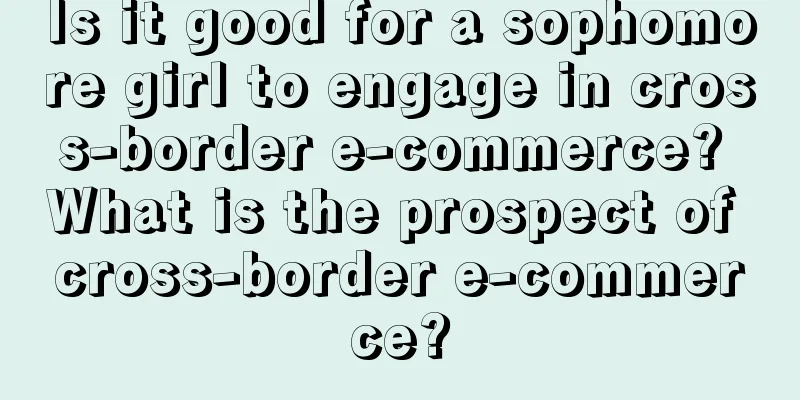How to go from Made in China to Chinese brands?

This year, I have been talking about the new opportunities for going overseas: brand going overseas. Our hard power, such as production and manufacturing capabilities and supply chain capabilities, was in place a long time ago, but we lacked soft power in the past. Shen Pan, the innovation leader and corporate strategy consultant of Chaos Academy, once shared with me that the cultural curve often lags behind the consumption curve by one cycle. When the cultural curve exceeds the consumption curve, cultural output will begin, and a group of consumer brands with global influence will be born. This is the sentence I wrote when I shared at the Knife Skills Annual Summit at the beginning of 2023. Now it has taken shape. In the past year, Chinese consumer brands have accumulated a lot of experience and blossomed in the global market. MINISO has opened 30 stores in the UK alone, and announced in November this year that it will open its first outlet store in London Designer Outlets. Bawang Chaji will also enter the US market next spring. The popularity of Pop Mart is even more amazing. This year, many Southeast Asian tourists’ first stop in Shanghai is no longer to check in at the Bund, but to rush to the Pop Mart global flagship store on Nanjing East Road to queue up for blind boxes. Last time, after attending the Amazon Advertising Unboxing Ceremony, I was deeply inspired after communicating and learning with overseas brand operators. I used a video to share how overseas brands changed their sales mindset, from "getting goods" to "getting people". Some readers who are working on brand expansion overseas asked me if I could share some practical tips on what marketing strategies and product tools to use to make the brand better? Are there any good cases to refer to? Today, I would like to share with you some of my thoughts and observations based on the cases of Chinese companies going global in different tracks, cities, and stages of development using Amazon advertising to achieve success on the world stage. These cases mainly come from the fourth season of the short video series "Sailor Plan" jointly launched by Amazon Advertising and Amazon Global Store this year. Over the past four years, "Sailor Plan" has recorded the stories of 26 Chinese brands from different categories and sizes. The challenges they face, strategies and methods they use to deal with them are particularly referenceable. 1. The key to branding breakthrough: Deeply cultivate scenes and groupsIn the era of exporting products, Chinese merchants sell white-label currencies and use their manufacturing advantages to earn a little exchange rate difference. Although they can make money, the result is that the profit margins are getting thinner and thinner. But I found that many of the new generation of Chinese brands made up their minds to build their brands from the first day of their business. In the fourth season of "Sailor Plan", the brand that surprised me the most was AstroAI. Its main product is the car air pump, which is mainly used to pressurize and inflate car tires. It has a clear idea of branding, using car life scenes as a breakthrough to attract self-driving outdoor people. Brands with such strong tool attributes are all building momentum, which shows that our Chinese entrepreneurs today have fully realized the value of brands. All walks of life are using quality and brand to tell consumers why I am worth your premium. So how do you break through from white-label currency to brand? I found that these brands that have successfully gained a foothold in the hearts of overseas consumers have one thing in common, that is, they are sufficiently focused. For example, Ocoopa, a brand of rechargeable hand warmers. This category is actually very seasonal, with sales mainly concentrated from September to January each year. How to seek growth in a market with increasingly fierce price competition? Ocoopa's strategy is to break through both the product and the brand. The first breakthrough is to break the scene - bringing the brand into the outdoor scene, and the second breakthrough is to break the crowd - to target the e-sports vertical crowd and people with Raynaud's syndrome. Why these two groups? After conducting a thorough consumer survey, Ocoopa found that e-sports players use hand warmers regardless of the season, because they need to keep their hand muscles warm before and during the game, just like we need to warm up before running to have better athletic performance. Raynaud's syndrome patients are very prone to finger cramps after being exposed to cold, and experience symptoms such as pain and numbness. After formulating a strategy to break the circle, Ocoopa also adjusted its approach on Amazon and prepared video materials in advance. It expanded from the previous single product promotion to a combination of brand promotion and display promotion to reach consumers from different circles. After Ocoopa increased its brand promotion budget from 7% to 20%, the number of new customers reached increased sixfold within two weeks, breaking through the target audience and improving conversion rates compared to the past. Another brand that caught my eye is HOTO. When I first saw its electronic screwdriver, the first impression in my mind was beauty and simplicity. The beauty of its design is very intuitive and has become the unique advantage of the brand. At the beginning of its establishment, the team adhered to the design concept of "easy to use, compact, and integrated into life", hoping to apply strong industrial design capabilities and intelligent technology to the traditional tool industry. However, in the process of expanding its market, HOTO encountered a common challenge, which is balancing the conflict between sales orientation and brand orientation. During the product launch process, the operations team and the product team had different opinions on the modification of the product image. In the eyes of the operations team, the design-oriented, small and beautiful material style was not efficient enough in conveying information. However, in the eyes of the product team, design beauty is the brand's characteristic and should be upheld. HOTO’s approach was to conduct AB testing. Through Amazon Advertising’s “Manage Your Experiments” feature, HOTO distributed two different versions of the creative to different groups of people and made timely adjustments based on data feedback. Although the sales-oriented version is better, the operations team also recognizes that it is difficult to accurately measure the impact of materials on customer emotions with the current technology, and more attempts are needed on the road to building the brand. In the era of media fragmentation, focus is a very useful solution. The more focused the crowd and the buying points are, the easier it is to do marketing. The most surprising discovery for me is that our Chinese brands are not only active in the fast-moving consumer goods sector, but are also actively exploring the durable consumer goods sector. By developing and designing products that meet the needs of local consumers and using advertising tools to build brands step by step, they are able to escape the quagmire of price wars. 2. Make a good overall communication combination to increase volume and improve qualityThis year, whether doing consulting business or preparing for the Knife Skills Summit, I found that almost all marketers are asking the same question over and over again: the media is no longer fragmented but pulverized. In such an era, how can we do omni-channel marketing well? When I was doing research on overseas brands, I found that overseas brands also face this problem, and the challenge is even more severe. In the past, overseas brands may only need to grab keywords on the site and do a good job of search or display advertising. Today, if you want to build a brand, you need more effective means to capture the scattered attention of users in the whole region and drive conversion. AstroAI has also gone through this stage. In the past, AstroAI's main means of expanding the market was to continuously reduce costs, but the result was a decline in the overall competitiveness of its products. Not only did its sales fail to increase, but its sales volume also declined. For this reason, AstroAI has determined to build a brand. The strategy has changed, and the tactics must keep up. In order to reach a wider range of users, AstroAI tried video advertising for the first time, and specially asked the US branch team to produce localized video materials. Through Prime Video Ads, the brand was brought to Amazon's streaming media members, allowing more high-potential users to see such a brand that focuses on car lifestyle. There is another sentence in the Sailor Project short video that left a deep impression on me, "We don't expect direct conversions, but we hope to see an increase in exposure and familiarity, as long as AstroAI leaves the impression that it is a big brand. Branding is actually about letting more consumers see the brand and come for the brand, not just for a hit product. Ultimately, brand is how consumers view your company." He actually pointed out the essence of the brand. Especially in today's consumer environment, consumers' identification with the brand is very important, and this measurement indicator is even greater than popularity. The practice of the competitive Rubik's Cube brand GANCUBE also confirms this. Many people may not know that Rubik's Cube can also be a competitive sport. GANCUBE is a global leader in this field. It has done one thing right, which is to continue to promote the culture of speed cube racing, and to reach the core players in the entire ecosystem by holding Rubik's Cube competitions and producing speed cube racing materials. This is actually a classic way to cultivate brand identity among the crowd. However, in the global competition environment, if you want to make a niche culture popular, you also need to cooperate with the correct communication strategy. Inspired by Amazon Advertising, GANCUBE has refined the richness of its advertising. Through richer Amazon DSP advertising formats and Sponsored Brands Video brand promotion videos, it allows potential consumers to feel its sense of speed and refresh their perception of the Rubik's Cube - it is not only a toy that can bring fun and companionship, but also a sport that challenges oneself. After adjusting the creative materials and delivery combinations, GANCUBE's exposure increased by 328% and sales increased by 380% in one month. 3. From focusing on attracting new customers to refined crowd operationsFrom the first two parts, we can see that if you want to do a good job in overseas brands nowadays, you must deepen your understanding of consumers. From a seller's market to a buyer's market, brands can no longer occupy users, but users choose brands. They will only pay for brands that "I need", "suitable for me" and "related to me". Brands need to plant this mentality. I’ve found that leading brands are already using Amazon Advertising’s tools to gain deeper insights into their consumers. After going public, Savitech, an export cross-border brand e-commerce company, has strengthened its determination to build a brand. One of the important reasons is that market competition is becoming increasingly fierce, especially in the clothing industry, where pricing has been reduced from US$29.9 in previous years to US$19.9. Keeping prices low is not a long-term solution. With the determination to "truly build a brand, not just a brand that sells goods", Savitech has stepped up its product and team building, and its brand promotion team has grown from a dozen people to more than a hundred people. Among them, understanding consumers is one of the important tasks. Savitech's method is to pull user reviews left on Amazon, summarize the advantages and pain points of the product through feedback, and combine Amazon's data analysis tools to understand what users are thinking, and evaluate user satisfaction from different dimensions. Its dimensions are so detailed that it will specifically list the fabric evaluations and divide them into improvement areas and advantage areas. It will also make improvements to the problems that consumers have reported, such as fabrics being too thin and too transparent, and the size being too small. Product optimization is just one of the values brought by deep crowd mining. In the case of XPPen, it even promoted brand transformation. After successfully expanding to 18 sites in Japan, America, Europe, the Middle East, and Australia through Amazon, XPPen has reached more than 10 million users worldwide. The next goal is to become an indispensable part of the global creative community. To achieve this great goal, it is not enough to have strong products, but also to enter the art circle of creators around the world. XPPen's strategy is to build the brand into an art and cultural exchange platform, hoping to connect artists, creators and brands. To this end, XPPen has launched a youth plan to support young creators, sponsored youth illustration competitions, and independently held creative competitions. These initiatives are all aimed at deepening XPPen's brand awareness in the art circle. What are creators around the world interested in? Where do they usually communicate? In order to figure out these questions, XPPen chose to use Amazon Advertising ABA Brand Analysis Tool to perform target group analysis. Based on the analysis, XPPen found suitable IPs for cooperation, produced brand-specific materials, and then used Amazon Advertising to view the complete and clear ecological chain and dig deep into the performance of a certain material in each region. These are all important bases for optimizing the delivery strategy and efficiently reaching the target audience. 4. Writing a reviewThere are many similarities between the overseas market and the domestic market, such as the fragmented media environment and the unmet needs of segmented scenarios and segments of the population. The underlying logic of branding is actually the same, and in my opinion, Chinese brands have another advantage, that is, they have already gone through a round of competition in China, and going overseas is like taking the reference answers to answer questions. As long as you find partners in the same industry and choose the right tools, building a golden signboard overseas is no longer an unattainable dream. I understand that the fifth season of "Sailor Plan" has also started recruiting. Interested brands going overseas can sign up to participate. It is not only a record, but also can help more brands build confidence in going overseas and stir up waves for going overseas. Author | Editor | Daojie Doris |
<<: User retention analysis: improve user stickiness and increase user life cycle value
>>: How can a newly opened medical clinic or health care center attract offline customers?
Recommend
What is Shopee’s top promotion? How to top a product?
In the process of opening a store on Shopee, you w...
Big sale marketing psychology - why do big sales use the promotion method of pre-sale + final payment?
In the context of e-commerce promotions, how can w...
5 things you need to know about influencer marketing in Saudi Arabia
Influencer marketing in Saudi Arabia has been popu...
What? The Yogurt Assassin is here too!
The high price of yogurt marketing may be because ...
Can’t Tik Tok defeat Ctrip?
Douyin is a short video platform, but it covers a ...
With the European Cup approaching, can Chinese overseas brands still reap the benefits?
Chinese brands are gradually going abroad and work...
Luckin Coffee’s pun copy goes viral, is it city or not?
Luckin Coffee used the internet buzzword "cit...
Will the Amazon account association immediately block my store? Can the association be restored?
On Amazon's e-commerce platform, sellers must ...
Which one is better, Lazada or Shopee? How to operate cross-border e-commerce?
In addition to domestic e-commerce platforms such ...
Overlord Tea Princess, she is really good at writing copy!
This article will take an in-depth look at Bawang ...
How does Amazon check whether a product has been added to the shopping cart? How does it operate?
After we open a store on Amazon, we need to upload...
The most profitable track in the private sector? 3 secrets to double the performance of the private sector of health products
As the public's health awareness increases, pe...
How Xiaohongshu leveraged TV drama topics to achieve a 300% increase in traffic
Xiaohongshu's efforts in seeding and marketing...
The secret of e-commerce experts to make money: follow the trend
"The way to make money in e-commerce is to fo...
When traditional culture becomes the "stepping stone" for variety shows to break through the circle
Variety shows have always been a popular type of p...









